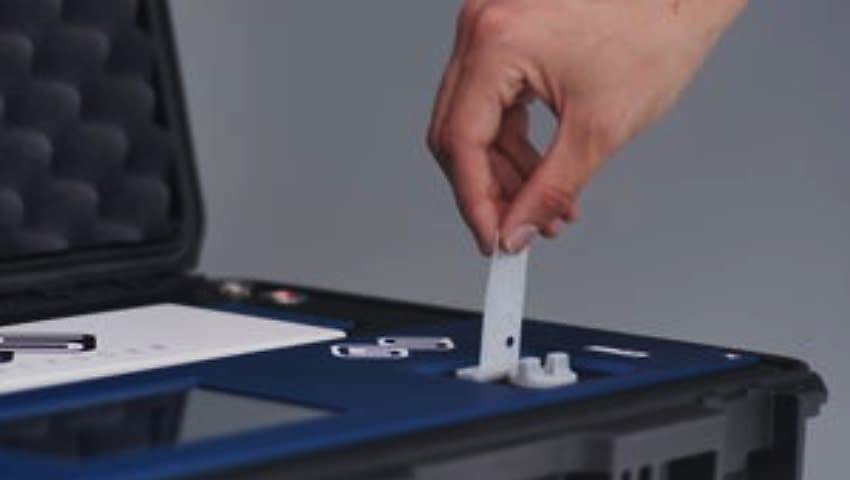Modern explosives sensors are effective at detecting commercial and military explosives but less so when it comes to homemade explosives, and that’s where Australian industry has stepped in.
To continue reading the rest of this article, please log in.
Create free account to get unlimited news articles and more!
Defence Minister Christopher Pyne said Australian industry had developed a unique device capable of rapidly detecting homemade explosives and that would arm security agencies with a powerful tool against terrorism.
Minister Pyne launched a prototype of the GreyScan explosive detection device while visiting the Grey Innovation Group facilities in Melbourne.
“I commend Grey Innovation Group on this pioneering product which will help make Australians safer. It is yet another example of Australian innovation delivering critical capability,” the minister said.
“This is an exciting technology which addresses the growing need for detection capabilities at high risk locations such as Defence and police facilities, cargo handling facilities, entry and exit points for large events and, of course, in the aviation market.”
The GreyScan technology identifies trace amounts of inorganic explosives commonly found in homemade explosives. It can do that within 60 seconds.
“The accurate, consistent and rapid identification of these explosives is a first for any explosive trace detection system worldwide,” Grey Innovation says on its websites.
GreyScan technology was developed by the University of Tasmania’s Australian Centre for Research on Separation Science (ACROSS), with Grey Innovation as the industry partner in development of the proof-of-concept demonstrator.
That underwent extensive bench and field testing, which showed it could consistently and accurately detect inorganics from common background ions, from a solid surface in 60 seconds.
This technology was further developed with funding from the National Security Science and Technology Centre, now part of Defence Science and Technology (DST).
Minister Pyne said the US Transport Security Administration (TSA) is planning to trial the technology as part of its aviation security measures, recognising that inorganic explosives trace detection is a capability gap that the GreyScan technology fills.
With access to conventional commercial or military explosives tightly controlled, terrorists have increasingly resorted to homemade explosives, using instructions found on the internet and household and industrial chemicals, often sold over the counter.
That’s a highly risky practice as kitchen production processes are dangerous and resulting explosives highly unstable. However, a number of significant terror attacks have involved home produced explosives.
Australian industry has proved highly innovative at developing practical technologies to detect and defeat improvised explosive devices.
In May, L3 Micreo delivered the first batch of the new Silvershield vehicle-mounted counter-IED systems to the Australian Department of Defence.
The production order was awarded to L3 in March under the Redwing program, with the initial contract valued at $27 million for 13,000 units to be delivered in 2018.
These systems jam radio signals used by insurgents to initiate IEDs and proved highly effective in Afghanistan.

 Login
Login







